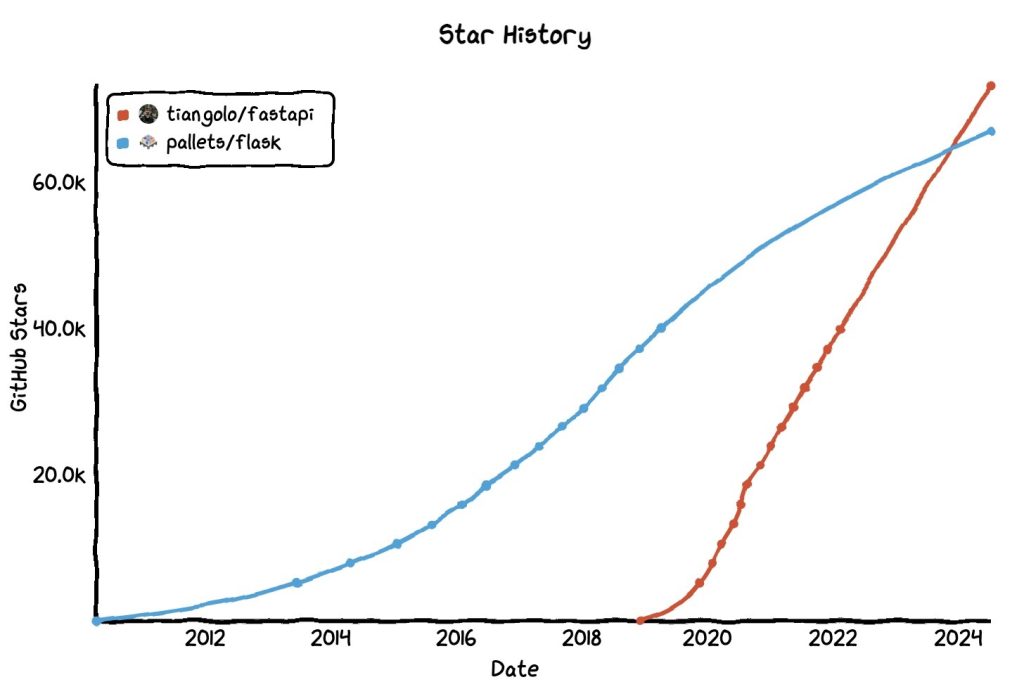Overview: The Changing Foundation of Web and App Development
The backend has always been the unseen force underlying all smooth online interactions. Backend frameworks control the scalability, security, and performance of any digital product, from user authentication to database queries and API management. The need for backend solutions that are scalable, maintainable, and high-performing is only going to increase as 2025 approaches. Selecting the appropriate backend framework can have a big impact on your development time and product success, whether you’re creating full-stack apps, RESTful APIs, or microservices.
As backend technology innovation picks up speed, new frameworks emerge and existing ones adapt to contemporary needs. Let’s examine the best backend frameworks for developers to become proficient in by 2025 and compare how well they operate in practical applications.
1. JavaScript Power on the Server with Node.js
The backend landscape is still dominated by Node.js because of its extensive ecosystem and asynchronous, non-blocking architecture.

Why Node.js Will Still Be Useful in 2025:
- Node.js is designed for real-time applications and performance, and it is built on top of Chrome’s V8 engine.
- More than 1.3 million libraries are available for almost any backend task using the npm package manager.
- It is perfect for chat apps, streaming services, and REST APIs because of its event-driven architecture.
Common Use Cases:
- Dashboards in real time
- Backends for IoT
- Scalable e-commerce REST APIs
2. Python’s FastAPI: A Contemporary, Quick (High-Performance) Web Framework
FastAPI is rapidly becoming popular in the Python community because of its asynchronous capabilities, speed, and integrated validation.

Why FastAPI Is Revolutionary:
- Use Python type hints to generate API documentation automatically (Swagger UI).
- Utilizing async/await for asynchronous support enhances speed and concurrency.
- Incredibly developer-friendly and boilerplate-free.
Examples of Use:
- Deployment of data science and machine learning models
- Architecture of microservices
- Automation of internal APIs
3. Spring Boot—Enterprise-Grade Java Framework
Java isn’t going anywhere—and Spring Boot is its most developer-friendly evolution yet.
Why Businesses Rely on Spring Boot:
- Configuration is made easier with production-ready settings.
- Microservices are supported by Spring Cloud by default.
- Strong security and dependency management through Maven/Gradle.
Typical Use Cases:
- Finance and technology
- Platforms for enterprise SaaS
- Safe RESTful APIs
4. Django—Batteries-Included Python Framework
For developers who wish to work quickly and create strong backend logic, Django provides a scalable, secure, and reliable solution.
The Persistent Domination of Django:
- Integrated admin panel, form processing, user authentication, and ORM.
- Promotes quick development while adhering to secure code guidelines.
- Works well with projects that require reusable, structured components.
Perfect For:
- CMS systems
- Applications for social networking
- Health and government websites
5. Express.js: The Compact and Adaptable Node.js Structure
Express.js serves as the framework that forms Node.js, if it is the engine.

The Reasons Developers Adore Express:
- Minimalistic style that permits flexibility in the organization of apps.
- Large middleware ecosystem and community.
- Ideal for developing single-page applications (SPAs) and APIs.
Examples of Use:
- Backends for RESTful APIs
- Server-side rendering with frameworks like React or Vue
- Quick MVPs
6. Laravel—The Elegant PHP Framework
One of the most advanced and safest frameworks for PHP development in 2025 is Laravel.
The Reasons Laravel Is Still Effective:
- Elegant syntax, integrated ORM (Eloquent), and Artisan CLI tools.
- Strong community support and extensive official packages.
- Ideal for both monolithic and API-based apps.
Ideal For:
- Platforms for small to medium-sized websites
- API development with Passport or Sanctum
- Blade templates are used in SaaS products.
7. Microsoft’s Cross-Platform Framework, .NET Core
One of the best options for cross-platform, high-performance backend development is still .NET Core (now simply .NET).
The Reasons It’s a Favorite of Companies:
- Cross-platform (Windows, Linux, and macOS)
- Razor Pages, Blazor, and Web API support
- Microsoft-backed and consistently tailored to business requirements
Uses:
- ERP programs
- Development of CRM
- Azure-based cloud-native apps
Tips for Selecting the Best Backend Framework in 2025
When there are so many good possibilities, how do you choose a framework?
Here are some things to think about:
- Language Proficiency: Focus on your team’s strengths, such as Python, Java, JS, etc.
- Performance Requirements FastAPI or Node.js may be better for really fast APIs.
- Project Scope: Small MVPs may benefit from Express or Laravel; large apps may need Spring Boot or .NET.
- Community & Ecosystem: A vibrant community translates into more support, guides, and plugins.
- No framework is one-size-fits-all—but choosing the correct one may drastically speed up development and enhance your application’s scalability and performance.
Final Thoughts: Backend in 2025 is All About Speed, Flexibility & Integration
By 2025, the backend will be used to facilitate the smooth integration of AI, real-time systems, scalable databases, and secure endpoints, in addition to processing data. Whether you’re building a fintech app, deploying AI models via API, or creating a real-time chat application, these backend frameworks offer the power, flexibility, and speed to help you succeed.
Make an informed decision and allow your backend to be the unseen engine driving your next big idea.

